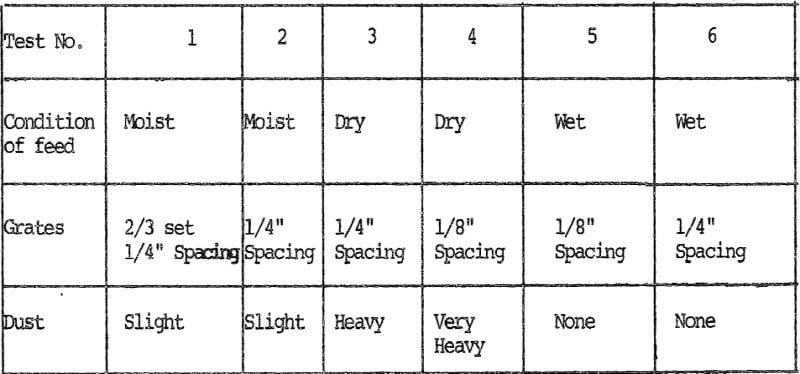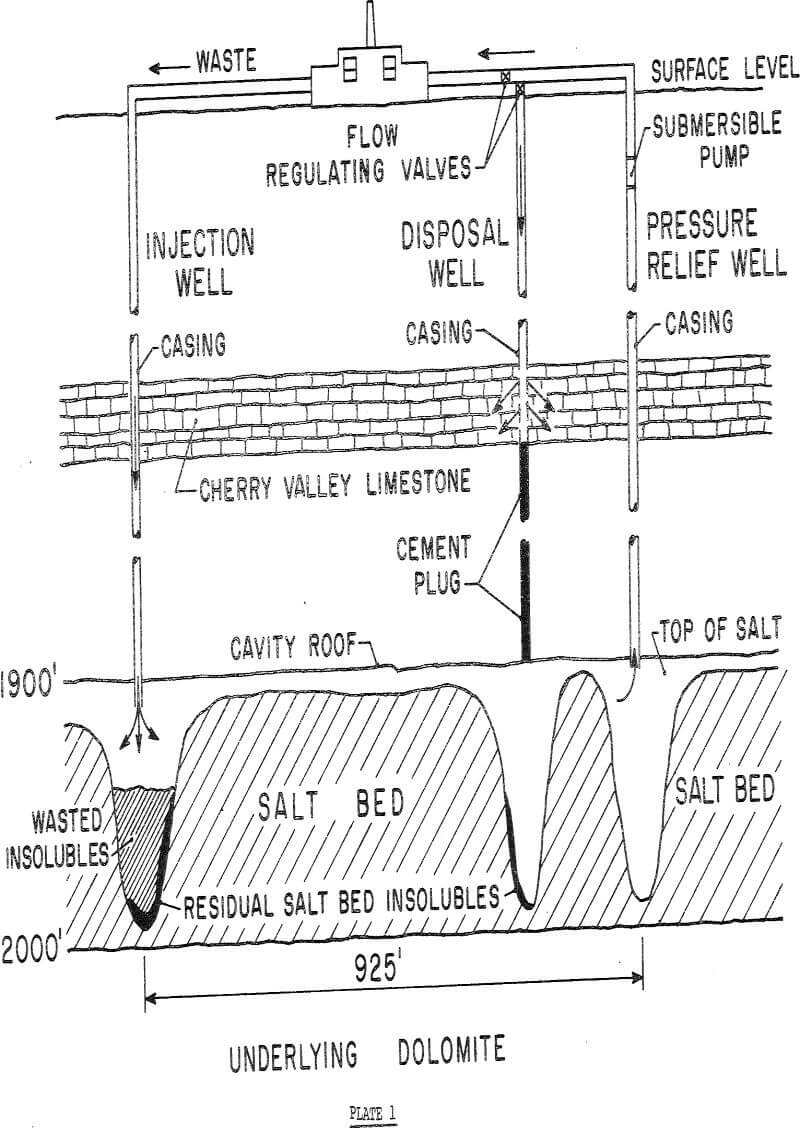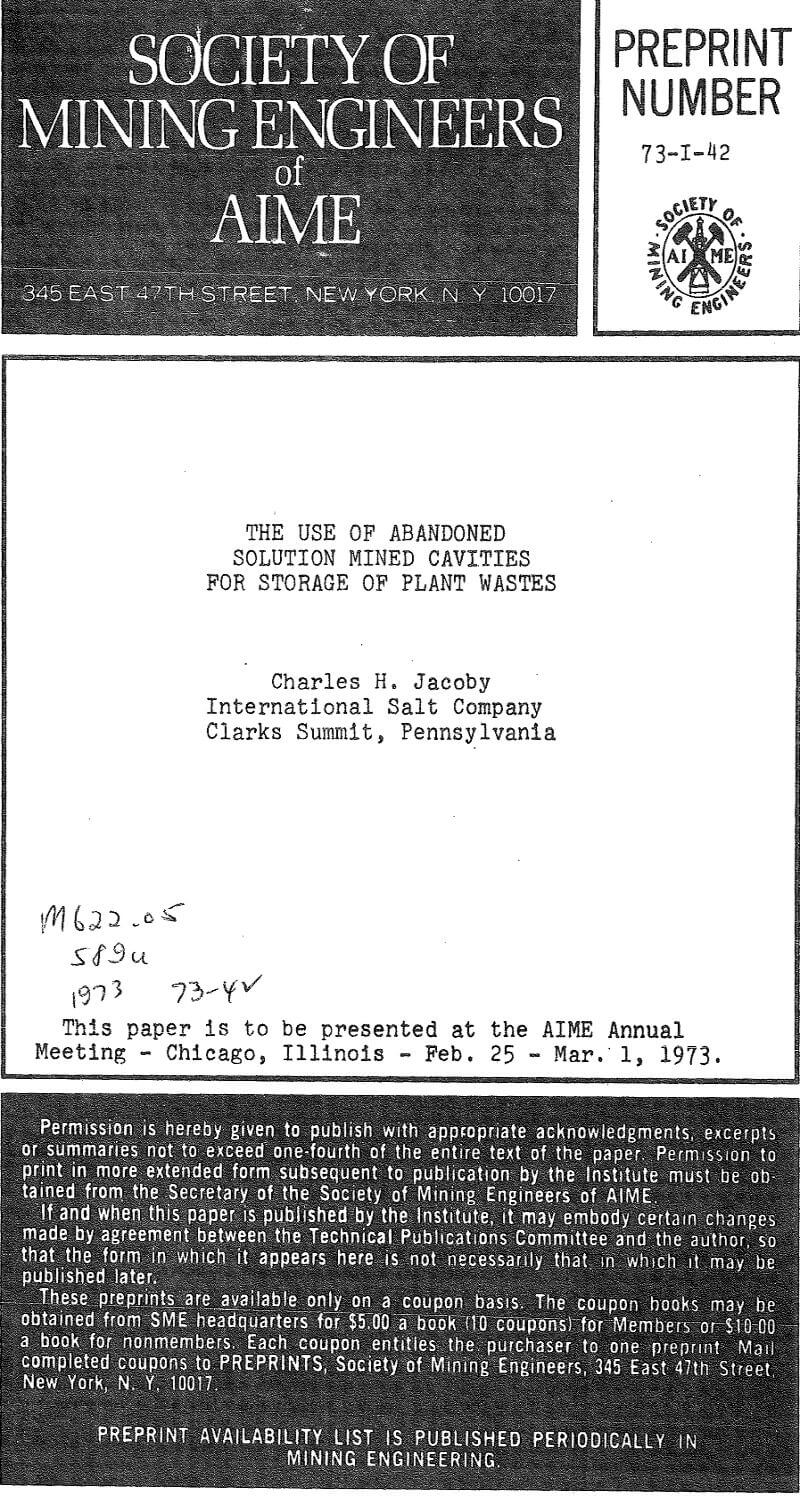In 1960 the management of International Salt Company made the decision that all waste material from the Watkins Glen plant would be stored in underground salt cavities. The cavities which they contemplated using had been depleted of salt to a point where continued operation would have impaired their structural stability. Originally, the waste to be disposed of included vacuum fan bleeds, cinders, contaminated salt and sewage. It was proposed that this material, in a slurry form, was to be injected into the salt cavity through one of the abandoned wells. Brine, displaced from the cavity, was to be recovered from an adjacent well and subsequently injected into the Cherry Valley limestone. This Cherry Valley limestone which underlies a large portion of north central New York contains a connate water with high concentrations of ammonia, hydrogen sulphide and the chlorides of calcium, magnesium and sodium.
Initially, the engineering studies of the wastes which were to be disposed of were broken down into four separate parts;
- Furnace cinders and fly ash
- Pan bleeds
- Waste and contaminated salt
- Sewage

As anticipated, it was found that the grinding unit equipped with 1/8″ mesh bar spacing produced the smallest size of material. The amount of water used with grinding was also found to be important. It appears that dry grinding gives a finer product than wet or moist, but at the same time wet grinding enables easy flushing of the material through the pulverizer and prevents air pollution by the dust. Sieve analysis of the ground cinders was within the 3″ – 100 M range.

The fact that the angle of repose is flatter in brine than in water is attributed to the increased buoyancy of the cinders in brine. Since the weight of the particles increases as the cube of its linear dimension, a flatter pile was obtained with smaller size particles, and a steeper angle of repose with coarse material. Our hammermill tests show that in practice the size (-20, +35 Mesh) could be readily produced and, therefore, this size was tested for its angle of repose.
Due to the fact that this cavity was created by the “casing injection” system of solution mining some 15 years ago, the greatest cavity height occurs at the well bore. Dense slurry waste will fill this section of the cavity first and subsequently flow out into the long, radial limbs of the cavity.

The limit of wellhead pressure as stipulated in the government permit, was developed on the basis of data extrapolated from a 24 hour pump test of the injection horizon. A drawdown test showed a specific yield of 0.25 gpm/foot of drawdown which was equal to a specific intake capacity of 0.25 gpm/foot of head in excess of the static head where the fluid was of the sane specific gravity as that of the formation.

